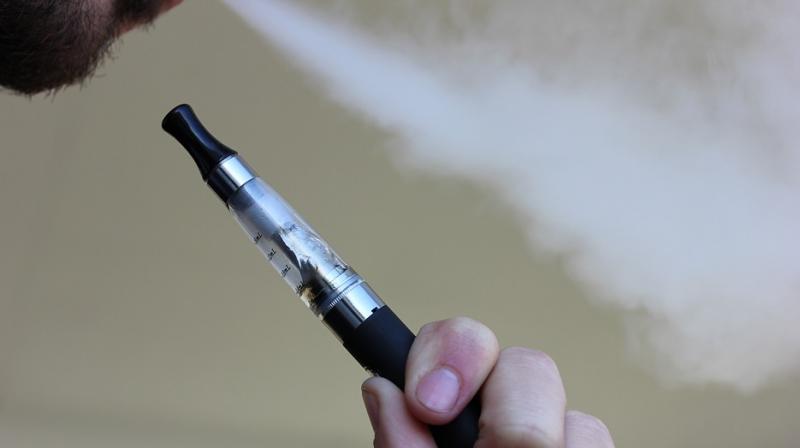E-cigarette flavours produce harmful toxins
The flavor of an e-cigarette may affect more than a consumer's taste buds.

Washington: Turns out, toxins produced by e-cigarettes vary by flavor.
According to a Penn State-led study, the flavor of an e-cigarette may affect more than a consumer's taste buds. The team of researchers said that the chemicals that make up different flavors also produce different levels of free radicals, toxins often associated with cancer and other diseases.
The researchers analysed popular e-cigarette flavors and the amount of free radicals they produced and found that many of the chemicals used to flavor e-cigarettes increased the production of free radicals, while a few actually lowered it.
Researcher John Richie said the results are an important step in learning more about the potential dangers of e-cigarettes. "When these products first came on the market, many people were saying they were harmless and that it was just water vapour," Richie said. "We know that's not true, but we also don't have the numbers on how dangerous e-cigarettes are. But now we know that e-cigarettes do produce free radicals, and the amount is affected by the flavourants added."
Free radicals are unstable molecules that can cause damage to healthy cells and have been linked to conditions like inflammation, heart disease, and cancer. Consumers inhale these free radicals when they smoke a combustible cigarette.
While e-cigarettes do not give off smoke, they do contain many different chemicals to flavor the e-liquids, which are absent from traditional, or "combustible," cigarettes. The researchers said that while the flavorings are approved for consumption, they aren't evaluated for safety when heated. "E-cigarettes have a coil for heating the liquid that gets quite hot and may aid the production of free radicals," Richie said. "It's important to look at the effect of flavors on these free radical levels because e-cigarettes come in hundreds of flavors, many of which are marketed toward kids, like bubblegum."
The researchers measured the free radicals produced by 50 flavors of a popular brand of e-cigarette and compared them to flavorless e-liquid. They found that about 43 percent of the flavors were associated with significantly higher levels of free radical production, while a few were associated with lower levels.
Next, the researchers broke down the flavors into their individual chemicals to see which ones were associated with higher levels of free radicals. Researcher Zachary Bitzer said isolating the chemicals was important because flavors are not consistent across brands.
"Two different manufacturers may sell an 'orange' flavored e-liquid, but they could each contain vastly different flavourants to get that orange flavor," Bitzer said. "Just like Coke and Pepsi are both colas but have different ingredients, different flavors of e-cigarettes may contain different flavourants, resulting in different levels of free radicals."
The researchers found six flavourants that significantly increased the production of free radicals. These flavourants included linalool, dipentene, and citral, which are often used to give products citrus or floral notes.
Additionally, the flavourant ethyl vanillin -- often used for vanilla notes -- decreased the production of free radicals by 42 percent. Richie said the results could help consumers make better decisions about the products they buy, as well as help policymakers create regulations around e-cigarettes in the future.
This study appears in the journal Free Radical Biology and Medicine.

